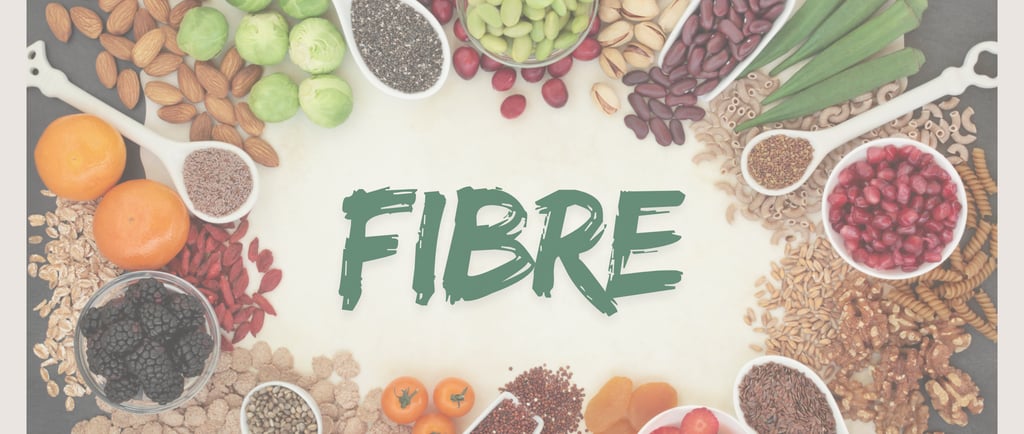What is Fibre and Am I Getting Enough of It?
What are the benefits of fibre, how much fibre do I need and what foods contain fibre?
HOMEPAGE
6/6/20252 min read
What is Fibre and am I getting enough of it?
6th June 2025


Fibre is a complex carbohydrate which is found naturally in plant-based foods and is crucial for a healthy digestive system. It’s the part of the food that our bodies can’t digest but plays a key role in keeping us full and aiding our digestion. Fibre is an essential part of our diet, yet many people are unsure about what it is and how much we really need.
Understanding Fibre and Its Benefits
There are two main types of fibre: soluble and insoluble. Soluble fibre dissolves in water and turns into a gel like substance in your gut. It helps to slow digestion which can make you feel fuller for longer and also helps to reduce spikes in blood sugar levels. It can also help lower the "bad" blood cholesterol levels. Insoluble fibre by contrast doesn't dissolve. It helps food to move through our digestive tract and can help regulate your digestion and prevent constipation.
Both types of fibre come with fantastic health benefits. Here are just a few of the advantages:
🦠 Supports digestion and promotes a healthy and diverse gut microbiome
🫀 Helps lower cholesterol, lower blood pressure and reduces risk of heart disease
📈 Helps to prevent spikes in blood sugar levels
🏋️ Helps keep you feeling fuller for longer (and may even help with weight loss)
How Much Fibre Do You Need?
So, how much fibre should you be aiming for? The general recommendation is about 30g per day for adults. However, recent statistics show that approximately 85% of the UK population fails to meet this target. Most people are getting closer to just 18g.
What Foods are High in Fibre?
If you're not hitting your fibre goals there are plenty of delicious foods you can easily incorporate into your diet. Some excellent sources of fibre include:
Legumes: Lentils, beans, and chickpeas are fantastic options.
Whole grains: Look for brown rice, oats, and whole wheat products.
Fruits: Berries, kiwi, apples, and pears provide a sweet way to boost your intake.
Vegetables: Carrots, broccoli, cauliflower, brussels sprouts, artichokes and even sweet potatoes are all high in fibre.
Nuts and seeds: Almonds, pumpkin seeds, chia seeds, and flaxseeds pack a fibre punch!
Tips for Increasing your Fibre Intake
Start small and build up. Increasing your fibre intake too quickly can lead to gas or bloating.
Make sure you're drinking plenty of water. This will help the fibre move through your digestive system and prevent constipation.
Try to incorporate a variety of different fibre-rich foods into your diet to ensure you're getting a good mix of both soluble and insoluble fibre.
Whenever possible try to eat the skin of fruit and vegetables as this is often where most of the fibre is. Just make sure to properly rinse them first.
The next time you're planning a meal or snack, think about how you can include more fibre!
Thriving Happy
Helping you to live your best life
© 2025. All rights reserved.